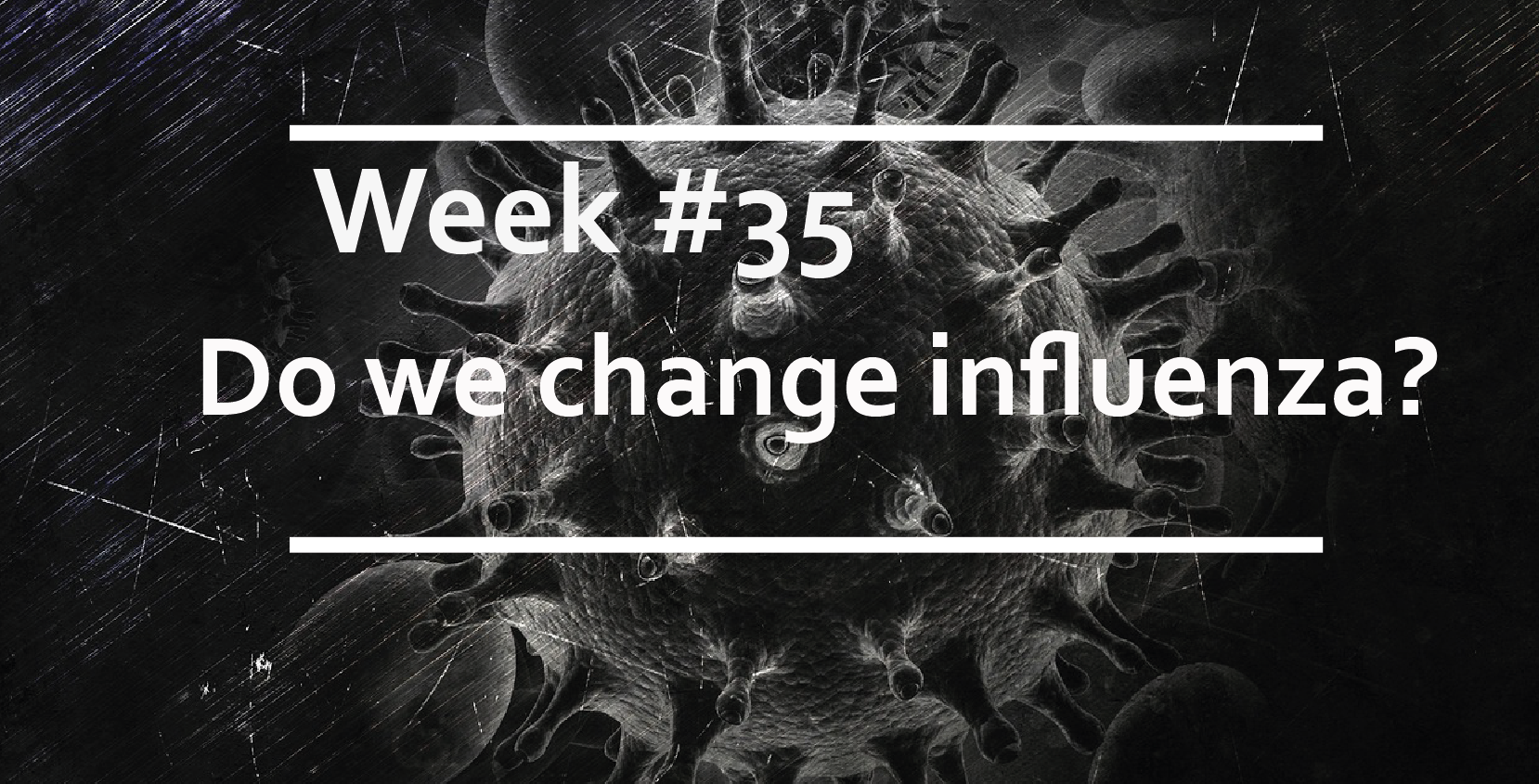Do we change influenza?
Seasonal influenza is caused by mutations that change the circulating virus in a way that is no longer (or only partially) recognised by our immune response. Pandemics are generally cause by more substantial reassortments that generate very different strains of flu compared to the circulating ones, causing more severe disease. But RNA viruses mutate rapidly, so shall we expect significant changes also from infection of a single human host? Xue et al. tell us how the flu evolves inside us.
Acute vs. chronic infections
While mutations do occur, this is not enough to spread a different infection: mutations also need to be selected for, and to fix in the generating host in order to be transmitted to other humans. In the context of an acute infection like the one caused by influenza in a healthy host and lasting generally no longer than 5-7 days, this scenario is quite unlikely. This doesn’t mean that new mutations don’t arise, but it is estimated that genetic diversity affects less than 10 nucleotides per genome, and in less than the 10% of the virus population within the host. Higher genetic diversity can occur following co-infection by multiple related viral strains, which is estimated to occur in half the patients sequenced. However, the consequences of this within-host diversity on pathogenesis and spread are likely to be almost negligible.
The situation is different for chronic influenza infection, lasting multiple weeks or even months, which can be common in immunocompromised patients. Given the higher monitoring rate of this class of individuals, more information is available on the ability of influenza to mutate and for new mutations to fix within the population. Several mutations have been described within the same host, some determined by the use of antivirals, which are more commonly used in this group of patients, but the impact of new variants arising form these relatively few cases in a mostly immunocompetent population is unclear.
What drives selection?
Differently from antivirals, vaccines do not seem to alter immunity enough to exert additional antigenic selection, and infection of vaccinated individuals is not due to the development of antibodies resistant mutants. Escape from antibodies and innate immune mechanisms appears to provide a stronger selective pressure.
A more significant contribution to influenza evolution is due to a different distribution of sialic acid receptors between the upper and the lower respiratory tract. A higher proportion of alpha 2,3-linked sialic acid is present in the upper respiratory tract, better supporting infection by viruses using that receptor; conversely, viruses with higher affinity for alpha 2,3-linked sialic acids will infect better the lower respiratory tract.
High viral loads also pose a risk of reassortments during co-infections, as the probability of genome segments from different viruses to end up in the same new virion are much higher. However, also the spread of viruses reassorted within the same host occur rarely and their relevance in viral dynamics across the population is not clear. Transmission bottleneck defines a phenomenon by which only a small fraction of viruses within an infected host can be passed onto another individual to initiate infection. Given the rarity of a mutation to arise and fix in the population, transmission bottlenecks limit the genetic diversity that is actually passed on.
How deep sequencing is going to help
Substantial progress in understanding virus within-host evolution has been due to the application of deep sequencing to the field, although the technique doesn’t come without technical limitations, which must be kept in mind in order to interpret any result correctly. Sensitivity remains the main problem when looking for rare events present in only a small fraction of the population, especially when considering that the influenza genome is extracted together with other genomic contaminants, including parts of the host genome, as well as genomes from co-infecting microbes. The inability to detect changes could then be due to technical limitation in deep sequencing.
Also, deep sequencing cannot determine the link between different mutations, and while computational methods can help relate the data, more work will be required to answer the many unanswered questions in influenza virus evolution.
Outlook
Although in some situations, like during infection of immunocompromised hosts, several within-host mutation can arise, the likelihood of these mutations to fix in the population and spread to other hosts seem modest, and not the leading cause of influenza variation in different seasons. The main driving forces for selection are innate immunity, an antibody response, the use of antiviral drugs, and the different types of cells present in the respiratory tract than can be infected by influenza. To what extent these different factors pay a role in virus evolution (whether this is influenza or any other acute infection by an RNA virus) is still largely unknown and deep sequencing is likely to shed further light in the field. It is important however to know what the limitations of the technique are, and how sample preparation may affect the reading. The field is still at the beginning and besides providing information on the role of the human host in influenza evolution, it is also likely to tell us more about the driving force that more or less slowly define how viruses mutate and spread.




